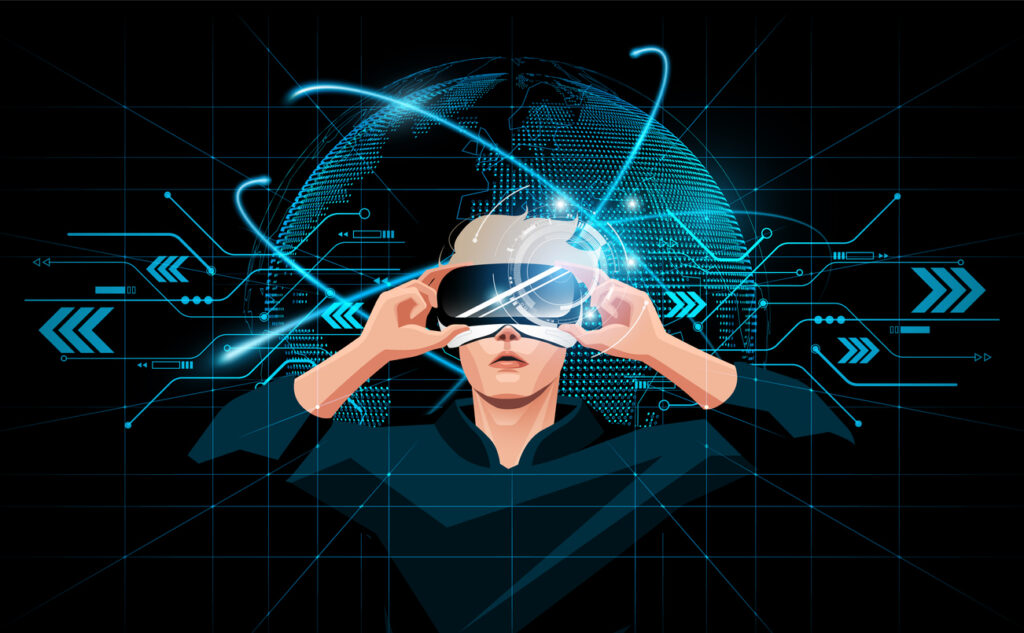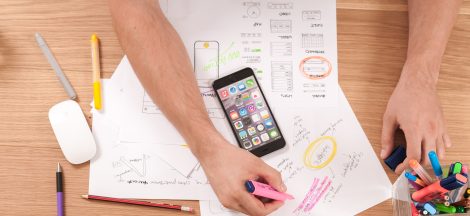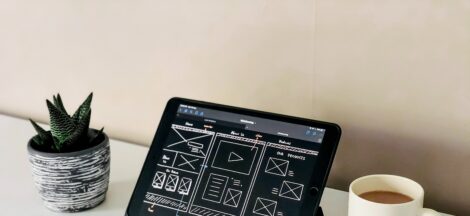Technology has been making our lives easier and more efficient every day. Augmented reality (AR) is a technology that was once only seen in science fiction but has now become a reality. Another area where AR is making its mark is in web design. An immersive web experience can be imparted using methods that leverage AR.
But before we answer how, let’s spill some beans over a few what’s.
What is Augmented reality?
As the name stands self-explanatory, Augmented reality, or AR, is about ‘augmenting’ virtual elements of the digital world with real-life corresponding or detailing elements that impart an exponentially vivid experience. AR uses real-world elements with additional information on top of it. This additional information is delivered to the users via smartphones or smart glasses through graphics, sounds, or other sensory Input. Often, software-based AR-Kits are used to build apps and functionalities supporting AR-based features.
On the hardware aspect, we find an additional AI core in smartphones nowadays, which helps in the day-to-day tasks of the phone. One field where AR is predominantly used is gaming. One example that you may have heard of is the game Pokemon Go. These games often use haptic feedback during specific actions to make the experience more immersive. Another example is the Google lens which uses the camera of the deceive to identify the object in the frame and provide you with real-time information about it.
In addition to AR, VR or Virtual reality has also become part of our everyday lives. VR allows us to interact with virtual objects. But the difference between AR and VR is that the former can work on devices like mobiles, tablets, and computers, but the latter requires a VR headset. But the app and web developers are constantly finding new ways to combine these experiences without requiring additional gear to purchase.
Augmented Reality & Virtual Reality in web design
Both AR and VR have become essential for web design. You might be familiar with Responsive web design, introduced in 2007. Responsive web design made using websites across all platforms easier. And now, with the introduction of augmented and virtual reality, the web experience has become more engaging. It provides an enticing experience to the users and increases their engagement with the website.
Augmented reality and what it brings to Web design
Improved accurate word definition & relatability
AR has evolved from more than just filters on Snapchat to playing a significant role in manufacturing, medicine, the military, space exploration, and more. And now, in web designing, it is playing a beefy part. Both web designers and developers are finding a way to integrate the digital world and the natural world to provide a good web experience to users.
A better demonstration of business offerings
The best website design companies you see use AR. It creates a more riveting experience for users and keeps them engaged on the websites. In addition, many professional web designers include AR elements so that users can check out their services more real-lifely. This ultimately reduces dissatisfaction, refunds, and returns.
Beyond Brick & Mortar
Imagine trying on glasses that look good and suit you without going to the store. LensKart, an Indian eyewear retail chain, provides just that using AR. Like LensKart, many latest website designs use AR. AR can also help users make faster buying decisions.
For creating a virtual reality experience in a matter of minutes, the WordPress VR plugin can be beneficial. You can upload 360° panoramic images of your product, and WordPress VR can make you a virtual reality tour that you can upload to any page or post.
Benefits of AR in web design
For a professional web designer, AR is an essential tool. Here are the benefits of AR in web design:
Creating consumer-friendly websites
AR used in website design creates consumer-friendly websites. Best AR-based websites are simple and interactive to use. For instance, if you want to include AR elements in your clothing-based website, you can add an AR section where the users can try your clothes to understand the fittings better and how they look.
The main principle of web design is to make a platform where all the content is listed straightforwardly. With AR, users can experience all the information without making many efforts.
Defining Input and output
When designing websites, you must have identified the inputs and outputs. They allow you to decide which elements of the website’s interface the users interact with. This will give you the overall picture of which elements to be augmented. For example, you could offer users a 3D model of your product. You can also figure out how your model will behave if the user chooses to change the position or shape of the products.
If you have a real estate-based website, you can use AR to create a 3d model of the house. Then, you can attach the model with the given listing, and the users can check out the house without visiting one.
Implementing real-time feedback
The primary purpose of AR is to connect the real with the virtual. Once the user has given feedback to your website, the AR elements can do the rest and provide them with helpful information.
For example, AR in GPS-based applications can determine the average time before the user arrives at the destination.
The application of AR has been seen more on beauty products shopping websites.
Keeping environmental considerations in mind
Face-mapping is used here, and the users can then apply various products “virtually.” With this, the users can make better decisions about the products. One massive benefit of Augmented reality is that it is not bound to one particular platform. Instead, users can use it on devices like smartphones, smartwatches, and glasses. A professional web designer will implement AR so that it functions smoothly across all platforms.
For a professional web designer, spatial consideration must be included when figuring out how the users may connect with the objects in the given frame. For example, the Inkhunter app lets users see what a tattoo will look like on the body, similar to a Snapchat filter.
Making virtual tours for travel and art
Due to Covid, people were stuck in their homes. But this was used by many tourist spots and museums as an opportunity to keep the visiting open by allowing virtual tours. So even though VR does not provide the best experience as reality, it still gives them a tour of their favorite destinations and art.
For making interactive educational platforms
Nowadays, the latest website design of educational platforms uses AR to give students a virtual learning experience in the comfort of their homes. This helped students, particularly during the covid pandemic. In addition, many educational platforms used AR to create an interactive model of various topics, further simplifying the learning process.
Conclusion
Augmented reality is undoubtedly advantageous when it comes to web designing. It can boost user engagement and enhance the value of your product and services. While implementing Augmented reality to your website can be difficult, it is definitely worth the try if it enhances the website. It is one of the reasons why big companies like Amazon, Nike, IKEA, Target, and others use AR to improve their website experience.






 How Can You Quickly Convert Data Using OCR?
How Can You Quickly Convert Data Using OCR?